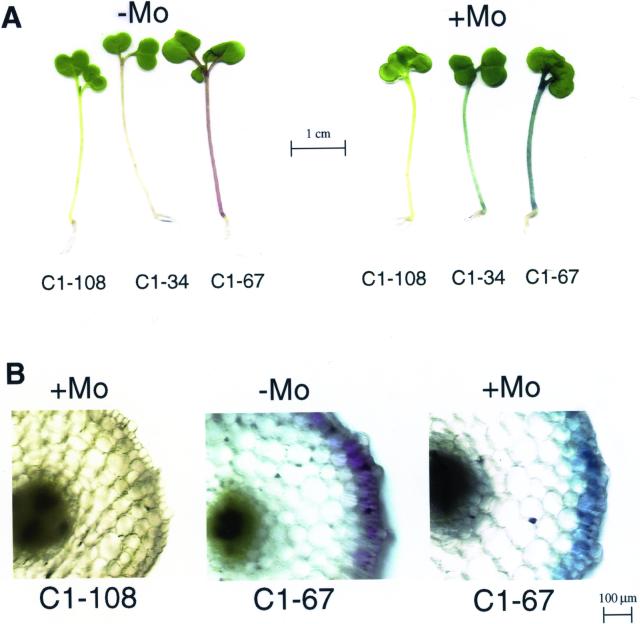Figure 5.
Mo-induced blueness is correlated with anthocyanin content. A, B. rapa seedlings were grown for 7 d on agar medium in the absence (left) or presence (right) of 30 mg L−1 ammonium molybdate. Three varieties were used, with different anthocyanin levels: anthocyanin-less (C1-108), intermediate anthocyanin content (C1-34), and high anthocyanin content (C1-67). B, Cross sections of different B. rapa varieties grown for 7 d on agar medium with or without 60 mg L−1 ammonium molybdate. Left, anthocyanin-less mutant (C1-108) grown in the presence of molybdate; middle, right, high-anthocyanin variety (C1-67) grown in the absence (middle), or the presence (right) of molybdate. Blue crystals similar to those found in Indian mustard were present in the Mo-treated B. rapa C1-67 seedlings, although difficult to see at this magnification.

